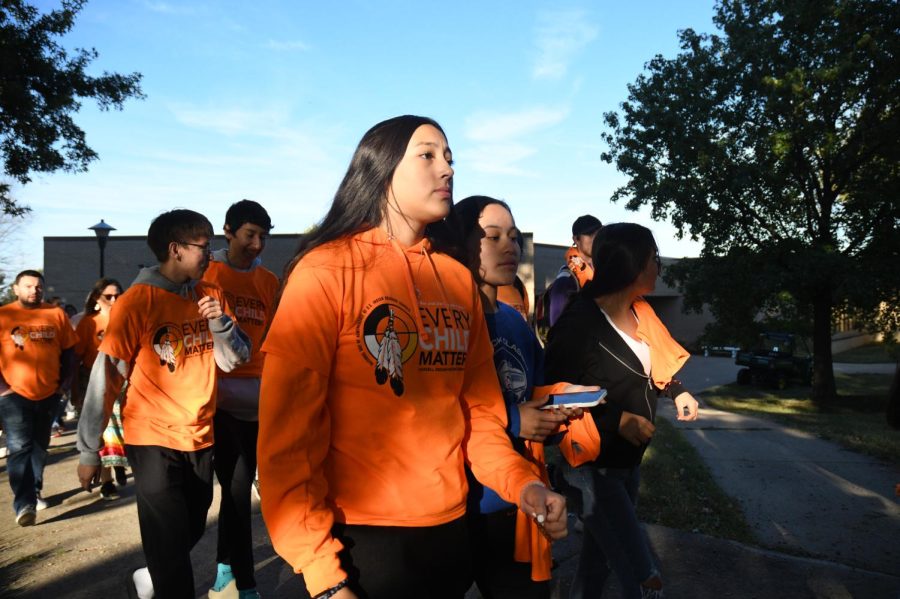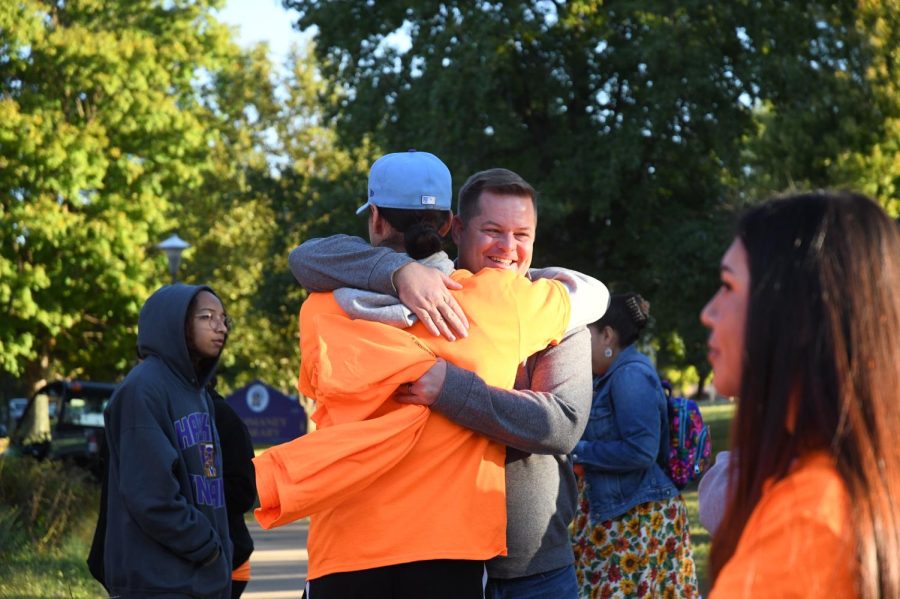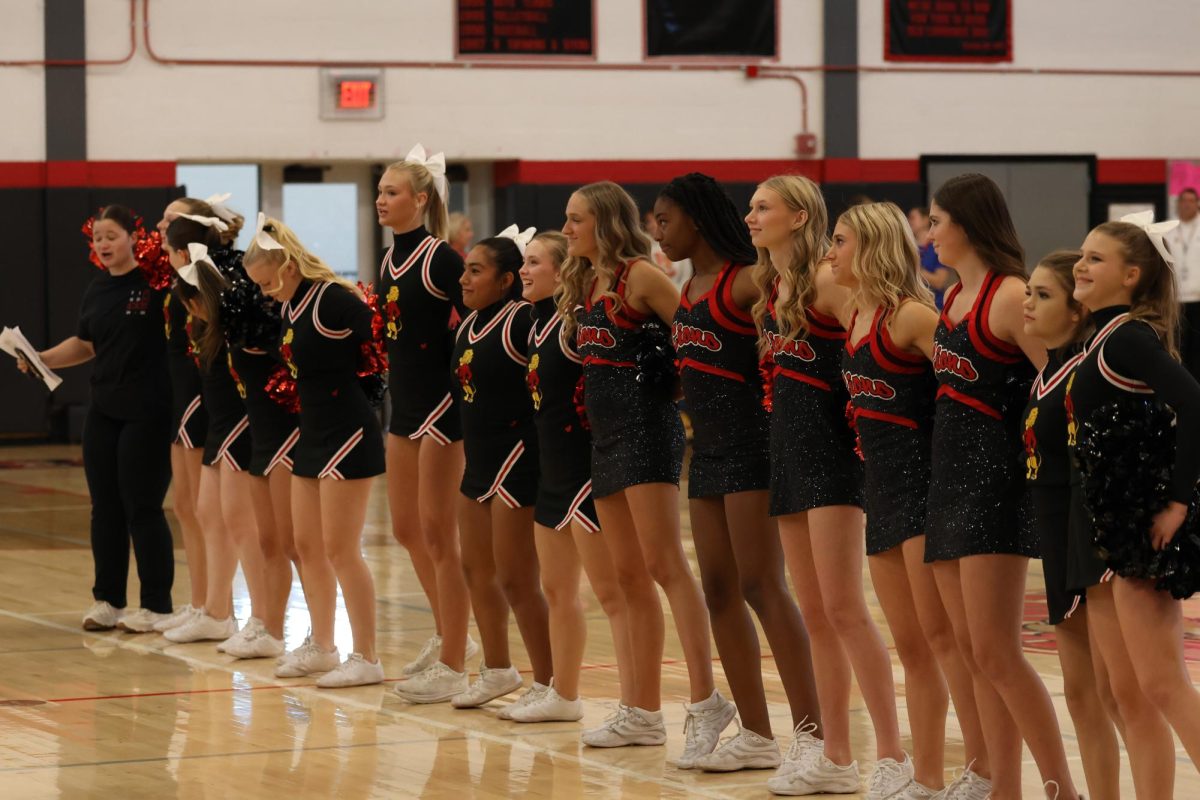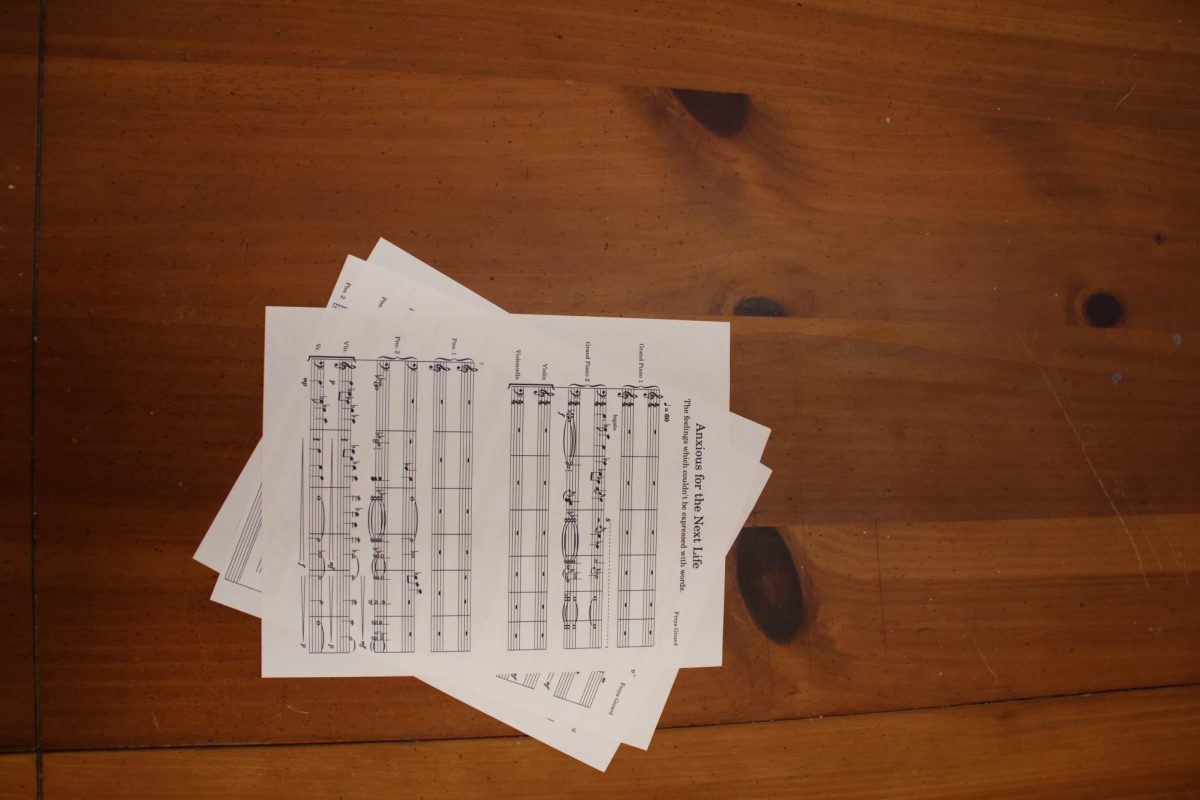Intertribal Club members mark National Day of Remembrance for Indian Boarding Schools
Remembrance walk brings students to Haskell for somber event
Students begin the march around the courtyard.
September 30, 2022
A somber recognition of history brought students to Haskell Indian Nations University this morning for the second consecutive walk on the National Day of Remembrance for Indian Boarding Schools.
LHS Intertribal Club members took part in honoring ancestors who endured cultural destruction and worse at boarding schools that had the goal of assimilation.
“We are here to remember those that paved the way for us,” student president Daryn Berryhill said. “To honor those that pushed through hard times, through the pain, to leave space for us today.”
Opening its doors in 1884 as the United States Indian Industrial Training School, Haskell was one of 12 assimilation boarding schools in Kansas. Haskell now draws students and faculty from all over the country belonging to more than 150 federally recognized sovereign nations and enrolls more than a thousand college students every semester.
“My dad works at Haskell, and I know that lots of his coworkers have come from far away, some people who work here have family who were forced to be here,” sophomore Mia Wilson said. “Haskell has gone from repressing our culture into creating a Native community in Lawrence”
Gathering to the southside of the library, students, alumni, faculty and community members began a march around the courtyard in honor of the ancestors who attended Haskell or similar schools.
“It really means a lot to me to be here today and honor my grandfather,” freshman Edward Roman Nose said. “He went to a boarding school, and I’m excited to tell him about it. I think a lot of us have family members that we are proud to honor today being here.”
Members of Intertribal Club make conscious efforts to honor their heritage on a daily basis and encourage others in the community to do the same.
“I wear a lot of beadwork and clothing,” freshman Payton Roberts said. “The biggest way that I represent my heritage is with my hair. We wear our hair long because they made us cut our hair. The way I was taught, the creator, God, gave us our hair so we should take care of it however long it grows.”
The United States Indian Industrial Trading school opened with a small campus and almost no buildings. Over time, the campus grew using the forced labor of students.
“They were up before dawn doing chores, and a lot of the things that are out here on campus were built by the students themselves,” Berryhill said. “Many of the kids didn’t make it back, and we actually have a cemetery here that’s for the folks that didn’t make it out.”
Circling around a fire at the conclusion of the walk, there was time for prayer, smudging – the burning of sacred herbs or medicines – and cleansing with the smoke.
“That’s how all of us pray — we don’t tend to pray by ourselves,” sophomore D’ema Barnes said. “I think it’s better that we do it all together. The smoke helps us let all our worries and bad thoughts go.”
With the walk, the fire and even in daily curriculum, Haskell is attempting to pay proper respect to the history of the school.
“This is a reminder of the impact of those schools on people even today,” Berryhill said. “Like for a person like me, both of my grandparents were sent to residential schools. It’s something that you have to be reminded of how these children were treated and abused back then. I think it’s good to have time to come together, and that’s one of the main goals of our university, not just today.”
















